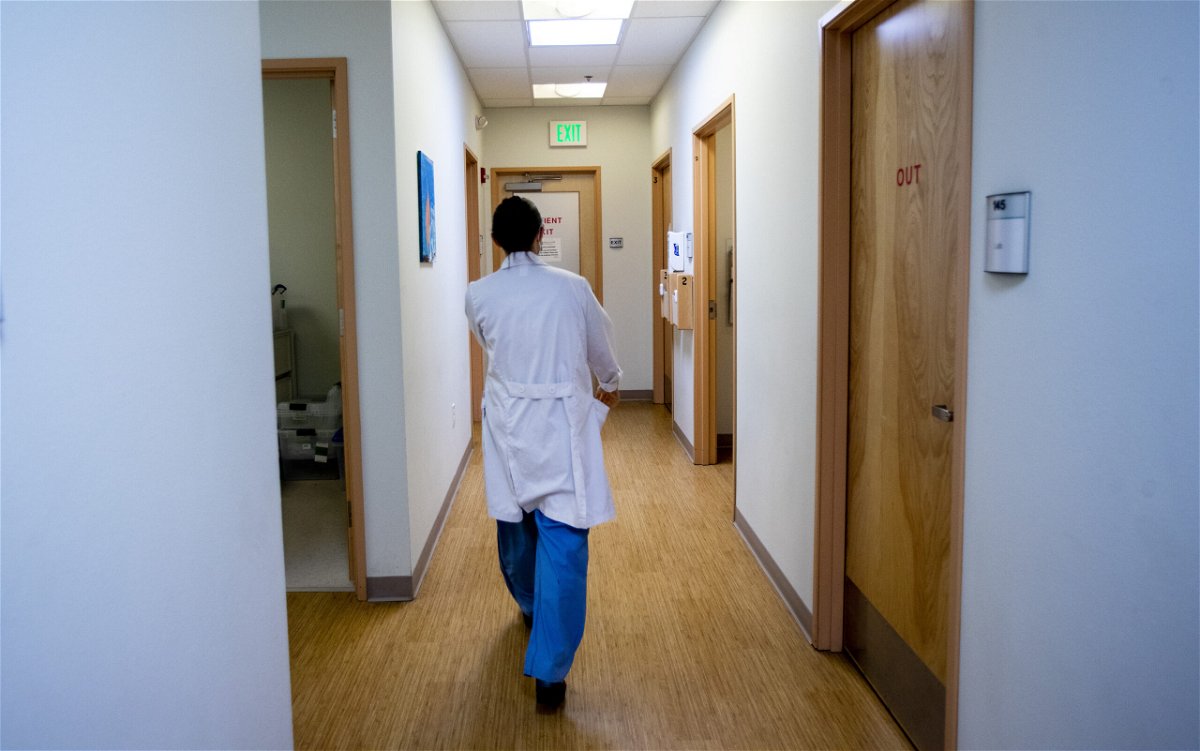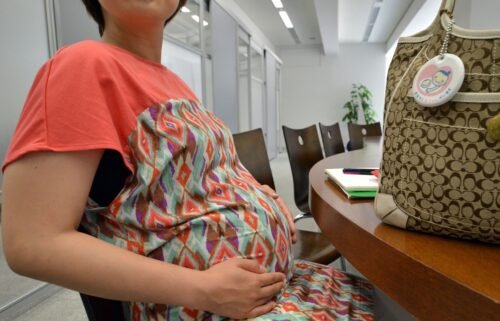Travel time to abortion facilities grew significantly after Supreme Court overturned Roe v. Wade

Travel time to abortion facilities grew significantly after the Supreme Court overturned Roe v. Wade. Pictured is an abortion medical facility in Albuquerque
By Deidre McPhillips, CNN
The average travel time to an abortion facility increased significantly for women in the United States after the Supreme Court overturned Roe v. Wade and revoked the federal right to an abortion, according to a new study published Tuesday in JAMA.
More than a dozen states enacted complete or partial bans on abortion after the Dobbs v. Jackson Women’s Health Organization ruling, and researchers considered abortion facilities in those states to be inactive — cutting the number of active facilities by a tenth.
This drop in active facilities means a third of women of reproductive age in the US live more than an hour from the closest abortion facility — more than double the share before the bans were enacted. And the average travel time to get an abortion more than tripled, from less than half an hour to more than an hour and a half.
“No one should have to travel outside their community to get the health care services that they need,” said Rachel Hardeman, a researcher and professor at the University of Minnesota School of Public Health who focuses on reproductive health equity but who was not directly involved in the research. “Certainly the complexity that comes with having to travel even an hour away from your home to get health care is a significant burden.”
For women in Texas and Louisiana, average travel times to the nearest abortion facility were seven hours longer, adding nearly a full workday in travel time to get an abortion.
“When the Dobbs decision came down, I think many people thought ‘Oh, they can just go to another state to get an abortion.’ I don’t think people on the coasts really understand the vast distances involved and the barriers that people have in their daily lives to travel to make these very long trips,” said Ushma Upadhyay, a professor at the University of California, San Francisco’s Bixby Center for Global Reproductive Health.
Barriers like extra time off of work, arranging for child care, costs of travel and for the procedure could be “insurmountable,” she said. “It means that abortion care will be impossible for many people.”
Overall, the Supreme Court decision adds the most significant barriers to access for Black, Hispanic and American Indian women. With more inactive facilities, an additional 1 in 4 Black women and 1 in 5 Hispanic and American Indian women has to travel more than an hour to an active abortion facility. Uninsured women and those with lower incomes also continue to have low access to abortion facilities, according to the study.
“The United States is the only industrialized nation with a rising maternal mortality rate, and Black people are at greater risk — three to four times more,’ Hardeman said.
“We can’t separate that data and reality from abortion bans. The ripple effects are important to think about.”
A separate analysis published Friday by #WeCount, a research project led by the Society of Family Planning, a nonprofit that supports research on abortion and contraception, found that there were at least 10,000 fewer abortions in the two months after the Supreme Court decision to overturn Roe v. Wade: a 6% drop in August compared with April.
In states that implemented a ban or severe restrictions, legal abortions dropped 95%. But in states where abortion remained legal, abortions increased only 11%.
“The increases in protected access states were not sufficient to compensate for the losses in the banned states,” said Upadhyay, who co-authored the JAMA study and the #WeCount analysis. “Together, these results point to a great unmet need for abortion care.”
The women falling into this gap are those who are less able to travel, she said. They’re more likely to be adolescents, immigrants, people experiencing partner violence and people with small children.
“They will most likely self-mange their abortion or delay their care and others will be forced to carry their unwanted pregnancy to term against their will.”
Another study published in JAMA on Tuesday similarly suggested how patterns of abortion care might change after the Supreme Court decision.
In September 2021, nearly a year before the Supreme Court’s Dobbs decision, Texas restricted abortions after the detection of cardiac activity in the embryo or fetus.
In the month after this law was enacted, in-state abortions dropped more than 50%, and five times as many Texas residents got abortions across state lines, most often in Oklahoma. But even with the increase in Texas residents seeking abortions out of state, overall abortions still declined.
Abortion facilities in neighboring states had more limited capacity and “were challenged to absorb a sudden surge of patients, which might have contributed to long waits for appointments and pregnant Texas residents obtaining abortions later in pregnancy,” the researchers wrote.
“We know that when people decide they want an abortion, they’re certain and they want an abortion as soon as possible,” Upadhyay said.
In 2020, medication abortion was used in more than half of abortions in the US, according to an analysis by the Guttmacher Institute, a reproductive rights research advocacy group. But federal guidance only approves use of medication abortion up to 10 weeks of pregnancy.
“Time is of the essence,” Upadhyay said.
But many clinics in states where abortion is still legal now have at least a two week waiting list, she said. And the people living in those states where abortion is still legal are having to delay their care, too.
Before the Supreme Court ruling, about one in 10 patients that Planned Parenthood of the Rocky Mountains saw for abortion care were from out of state, according to data shared with CNN. But now, more than one in three are from out of state — and most are from Texas.
In all of 2021, about 1,500 out-of-state patients traveled to the region for abortion care. In late summer 2022, more than 300 out-of-state patients scheduled abortion appointments every week.
Average wait times grew from less than two weeks to more than three weeks for first trimester abortions. And local Colorado residents had an extra four days added to their average wait times.
“Seeing the magnitude of the number of lives these data represent is really devastating,” Upadhyay said. “These are human lives that will be affected forever.”
The-CNN-Wire
™ & © 2022 Cable News Network, Inc., a Warner Bros. Discovery Company. All rights reserved.



